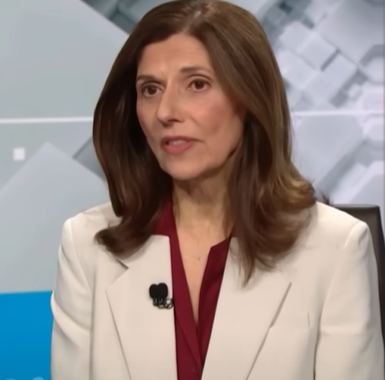Bond Market Getting More Sensitive to Rising Debt: Charles Schwab’s Kathy Jones warns that the bond market is becoming increasingly sensitive to the U.S.’s rising debt and budget deficits, demanding higher risk premiums. Alongside her, Allspring Global’s Brian Van Cronkhite explains why equities remain resilient despite macroeconomic uncertainties, inflation concerns, and tariff risks. The discussion also highlights strategic stock picks like D.R. Horton and Charles River Labs to balance offense and defense in today’s market environment.
Bond Market Getting More Sensitive to Rising Debt
In a market rattled by policy uncertainty, ballooning deficits, and looming tariff threats, both bond and equity strategists are playing cautiously—yet many investors are surprised that the S&P 500 remains near record highs. What’s going on under the surface?
In a recent discussion, Kathy Jones, Chief Fixed Income Strategist at Charles Schwab, and Brian Van Cronkhite, Senior Equity Portfolio Manager at Allspring Global Investments, laid out their perspectives on the current macroeconomic picture.
Kathy Jones said:
The U.S. budget deficit. Brought into the spotlight again after Elon Musk’s highly visible criticism of government spending, the concern isn’t so much about the risk of a U.S. default. According to Jones, “We’re the wealthiest country in the world. We certainly have the capability of servicing our debt.” The real issue lies in the bond market’s reaction to rising deficits. Long-term interest rates are ticking upward, not just in the U.S. but also in markets like Japan.
This signals that investors are starting to demand a higher risk premium, not because of default fears but because they believe excessive government spending will continue.
Beyond deficits, inflation remains a key concern. While recent inflation readings have shown improvement, the uncertainty around tariffs is clouding the picture. Jones noted that tariffs, if implemented, will almost certainly push prices up. In anticipation, some preemptive price increases have already started appearing.
The real question, she said, is whether these price bumps translate into a long-term inflation trend. On one hand, tariffs raise prices, but they also tend to slow economic growth—posing a dilemma for the Federal Reserve. With growth still looking stable and unemployment remaining low, the Fed might hold off on any aggressive moves until the inflation picture becomes clearer.
From an equity market perspective, Brian Van Cronkhite offered a surprisingly upbeat analysis. Despite the macro headwinds, the market has shown remarkable resilience. “The market’s been really resilient through all the uncertainty and all the noise,” he said. “Soft data that was weak earlier in the year has turned positive, and the hard data we feared might roll over has held up.”
This relative strength has led investors to hope that the Fed might soon be in a position to act more offensively, potentially easing conditions rather than tightening them.
Van Cronkhite pointed out that despite risks from political inaction on major bills and the unpredictability of trade policies, markets are currently “grabbing on to the data.” That optimism—however fragile—has been enough to keep stocks buoyant.
In terms of portfolio strategy, Van Cronkhite suggested a “choose your own adventure” approach that blends offense and defense. For those willing to play offense, homebuilder D.R. Horton stands out. Housing starts and turnover have been weak, leading to depressed valuations. But if the Fed moves to lower rates, it could breathe new life into the housing market, making builders like D.R. Horton a strong bet.
For a middle-of-the-road approach—offense through defense—he highlighted Charles River Laboratories. Operating in the healthcare sector, which is typically defensive, the company provides research tools and support to the biotech industry. While biotech has been under pressure from regulatory uncertainty and pricing rules, Charles River Labs is starting to see renewed interest. As Van Cronkhite explained, “They’re the picks and shovels to biotech,” and their vertically integrated model makes them a resilient self-help story, especially with activist investors involved.
Finally, for pure defense, he pointed to PRM (ticker not fully disclosed in the conversation), a classic safe-haven play in times of volatility.
In conclusion, while economic concerns like deficits, inflation, and policy uncertainty persist, both bond and stock markets seem to be focusing more on current data than long-term risks. As Jones and Van Cronkhite explained, it’s not about panic—it’s about preparation, diversification, and understanding which risks are priced in, and which could catch investors off guard.

